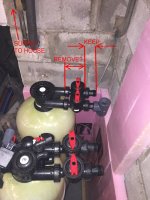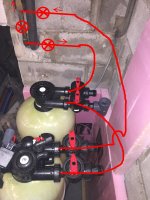Hello,
Just curious: do you rely on the bypass that comes integral with a water softener and acid neutralizer, or do you plumb your own bypass (with your own shut off valves, tees, etc) immediately before a softener/neutralizer combo?
All advice greatly appreciated.
Thanks
Theodore.
Just curious: do you rely on the bypass that comes integral with a water softener and acid neutralizer, or do you plumb your own bypass (with your own shut off valves, tees, etc) immediately before a softener/neutralizer combo?
All advice greatly appreciated.
Thanks
Theodore.


